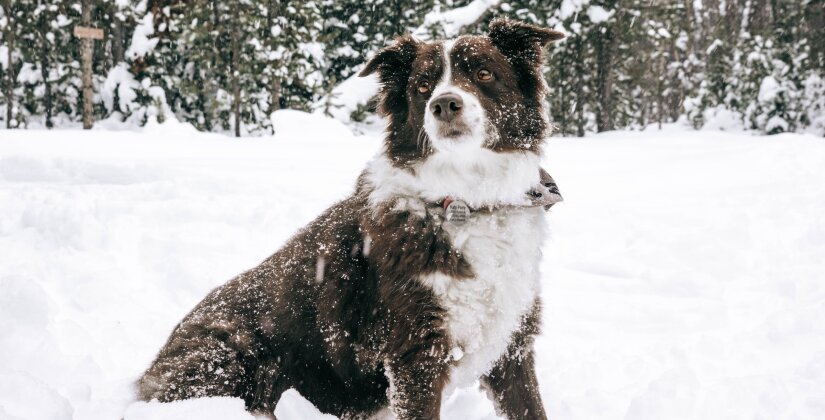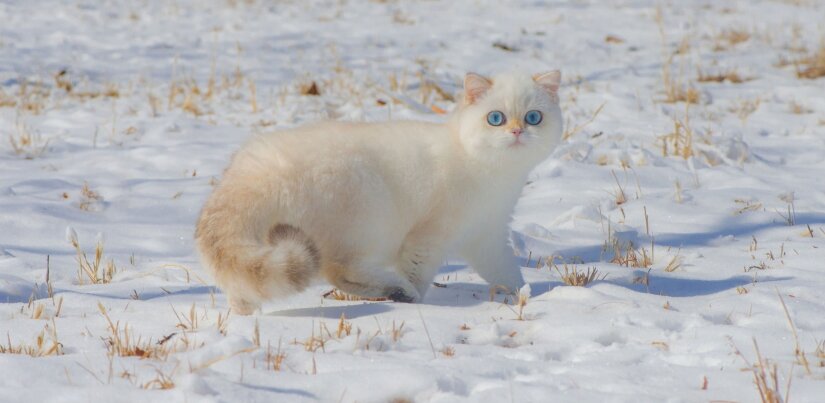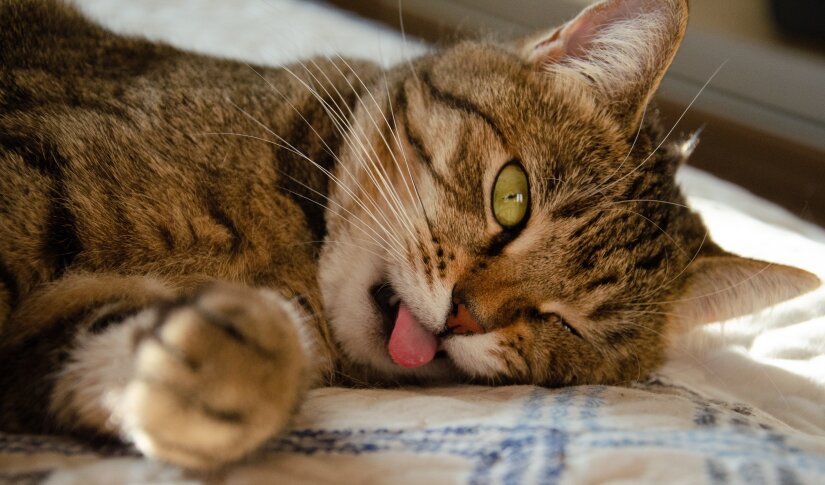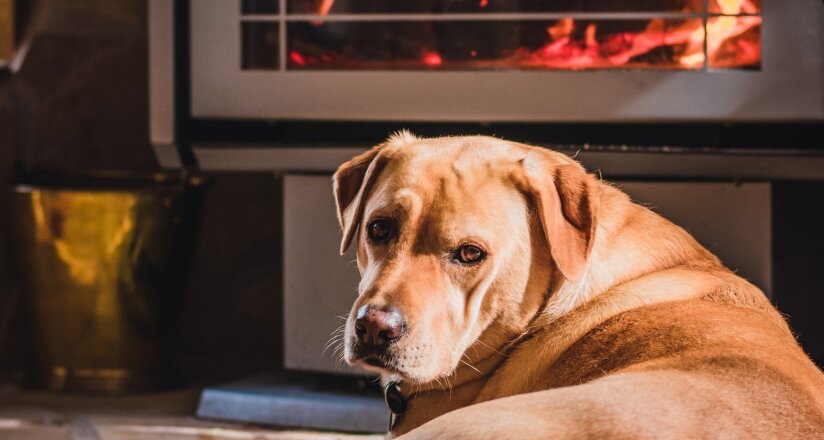As the temperature begins dropping from November onwards, we begin resetting our closets and arranging blankets to deal with the freezing cold. We begin finding ways to cope with the dropping temperature while keeping our daily needs in mind.
For pet owners, the preparation for winters involves an additional step. They do not only have to cater to their and their immediate family’s needs. But they also have to wreck their brains for the protection of their adopted family, as well, i.e., pets.
From making changes in their pet’s cage to finding the best custom pet blanket, they’ve to think a lot. If you too belong to this crowd, we’re happy to have you here on this page because this is where we change your life.
Below you will find a complete and comprehensive guide on handling your pets as winter arrives. We will be discussing potential dangers, a specific step-by-step guide for cats, dogs, and small mammals, as well as some quick and handy tips at the end.
Let’s get to it.
Winters & Red Alerts
Before we hop onto tips and solutions, let’s check out the things that winter could possibly do to your beloved pet. What dangers should you look out for? How different is winter for you and your pet?
Well, beginning with the basics, changing seasons are more or less the same for your pets as they are for you. In effect, your pets may be 10x more sensitive to temperature changes as compared to you.
According to a research paper published earlier in 2020, the tip of a dog’s nose is even sensitive to weak thermal radiation. So, be it a slight rise or drop in temperature drastically, your little fur bud is feeling it all.
Needless to say, winters are no exception. All our pets feel the freezing chills that extend from November to February. Since they feel it, they get affected too.
If you fail to take care of them properly, they may experience stiff joints and body pain. When the weather is damp and cool, the barometric pressure drops. And this brings about an inflammatory response in joints. It can even cause the surrounding tissues to swell, which pressurizes the surrounding nerves as well. Plus, reduced activity of the body in winters also causes discomfort and joint pain.
Outside, the world is covered in snow, and that brings about the danger too. Icy and snowy surfaces can increase the risk of damaging falls. Plus, the salt that’s used to keep the ice and snow from refreezing. It’s toxic for your pets. When it comes in touch with the paws, it could cause itchiness. And if your pets accidentally lick it in attempts of cleaning itself, it might prove to be deadly.
They may even be susceptible to frostbites!
The same applies to sensory skills. Your pet’s sensory skills, such as smell, are heavily distorted when winter arrives. When the cold covers everything, they begin losing track of things, such as smelling their way home or sensing a foodstuff. And this shatters your pet’s confidence in them for a while. They need your support to go about things.
If left outside unattended, your pets may die of cold! Check out some real-life unfortunate incidents that prove how dropping temperatures can lead to frozen deaths of our pets right in our very own yard.
Guide for Dogs Owners

Now, let’s get to how you can care for your dogs when it’s cold. In each of the sections below, we’ll discuss methods and safety tips in the respective domain.
Generally, you should take your dog out for frequent walks in winter. However, it would help greatly if you keep the length of the walks short. That’s because walking will generate some heat in your dog’s body. But if you elongate it, the cold of the ground will become discomforting, and the walk will become tiring and painstaking. Thus, building up fatigue.
Apart from that, here are a few care tips:
Diet
- Give your dogs loads of fresh water to keep them from dehydrating. And to protect their skin from drying up.
- Dogs that stay outside should be given food with a greater number of calories. That’s because they’ll need calories to burn and stay warm.
- Dogs that stay inside should be given food with lesser calories so that they don’t gain excessive weight.
Body Care
- Don’t cut their hair short. Let it grow thick and long, so it keeps them warm.
- Brush once a week to distribute natural oils evenly and remove dead skin cells.
- Wash your dog’s paws after every walk outside to get rid of accumulating salt.
- Buy shoes for dogs (booties) and have your dog wear these when walking around.
- Apply Vaseline or oil-rich creams that can prevent painful cracking.
Clothing & Accessories
- Buy a pullover or a jacket for your dog.
- Get your dog a comfortable fleece blanket. To add your own personalized touch and win your dog’s heart, you can even get a custom pet blanket.
- Settle a comfy bed indoors and encourage your dog to make use of it.
Guide for Cat Owners

Next to dogs, we have the most demanding creatures of all time, i.e., cats. These tiny little moody beings can give one tough time to their owners all around the year. They like to play it tough.
And so, on that very note, you’ve to be slightly extra careful in winters. They would be experiencing chills and still not give in because they like to play it tough.
But before we get to cat-specific winter tips, we ought to tell you cats are genuinely tough against cold. Most cats have thick coats which insulate them well and protect them against the harsh weather. Plus, the adaptation within cats is phenomenal. So, it is highly likely that your cat is already well-accustomed to all seasons of its region.
Nevertheless, let’s look at a few ways through which you can help your cat stay warm:
Diet
- Provide your cat with nutritious food that keeps its body and coat healthy.
- Increase the number of meals. Research suggests a cat’s body automatically demands more food to stay warm during winters.
- Provide them ample water to keep their skin from drying.
Body Care
- Give a shower once every two weeks. Replace it with dry cleaning instead.
- Brush their coats regularly to keep the hair from tangling and evenly distribute natural oils.
- Use cat moisturizers, paw wax, and natural oils to keep your feline friends’ paws protected. It will prevent irritating and discomforting cracks and dryness.
- Get your cat vaccinated and dewormed before winter. It will help them stay put in winters far better.
Clothing & Accessories
- Like dogs, cats can also wear uppers that help keep them warm.
- Cats can also wear caps and booties.
- You can also have them wear stylish jackets.
- Replace their old bedding with warm and plush bedding. Get a custom pet blanket to personalize the entire sleeping place.
Guide for Rabbit Owners

Caring for Rabbits in winter may not be much of a task unless your rabbit is new to your home. Rabbits are naturally good at handling low temperatures, especially if you keep them outside in a hutch. Newer rabbits, however, will demand greater care.
Nevertheless, here are a few winter care tips that you can handle in both cases:
Diet
- Keep hay available in your rabbit’s food bowl at all times. It helps them gather fat reserves.
- Change the water several times a day and ensure that the water bowl contains warm water.
Body Care
- Unnecessary showers are not recommendable for your little bunnies during winters. Even their regular showers (i.e., weekly or bi-weekly ones) should be replaced with dry cleaning wherein you can use a wet towel to clean the ears, nose, and eyes.
- As for the fur, comb it regularly to distribute natural oils.
Housing Needs
- Outdoor hutches should be placed at elevated levels.
- Spread straw and paper generously on the ground to provide them with warm and cozy nesting material.
- Install self-heating pads or heat lamps nearby the cages to create an artificial rise in the surrounding temperatures.
- Install Tarpaulins to protect your rabbit’s cage from wind, water, and snow.
Guide for Small Animal Owners

Lastly, let’s have a look at what you can arrange for your small pets. By small pets, we refer to chinchillas, guinea pigs, ferrets, etc.
Usually, these animals are kept in cages. And the cage is either placed in a well-ventilated area of the house or outside in the porch or garden. Hence, the care required is usually according to that.
Diet
- Provide chinchillas with high-quality grass hay, plain pellets, and small amounts of fresh produce.
- For ferrets, ensure that you increase the number of their meals because ferrets have high metabolic rates. Plus, ensure that their diet comprises meat since ferrets are strict carnivores.
- Guinea pigs should be fed with high amounts of carbs, especially if you let your guinea pigs lose. You can provide them with cabbage, carrots, turnips, broccoli, pepper, cucumber, and cherry tomatoes. Just read these guidelines before you proceed because some combinations of food can cause bloating and other digestive problems.
- Provide them with fresh water at all times. Change their water bottle or bowl every day.
Body Care
- Chinchillas come from a freezing climate, so their bodies naturally adapt and adjust to freezing temperatures. You may not need to take any special measures.
- Ferrets can get dry during winters. Hence, arrange an emollient skin spray to keep their body moisturized.
- For guinea pigs, read on about housing needs to find how you can care for their bodies. However, some signs that indicate hypothermia in guinea pigs include shivering, lethargy, loss of appetite, and curling up of the body.
Housing Needs
- If the temperature is freezing cold, it’s best to bring the cage indoors.
- Line the cage with plentiful newspapers, hay, and straw to keep your ferrets, guinea pigs, and chinchillas warm.
- If the temperature is unforgiving even indoors, it’s best to place a heater and close down all windows and spaces that let cold breezes in.
General Tips

Other than all that’s mentioned above, here’s a quick set of winter care tips for pets of all sorts:
- Keep the heater out of your pet’s reach. Often, heating devices appear too intriguing and appealing to pets, and they might end up getting a burn.
- Keep your pets active. Involve them in physically demanding games. When you do so, heat levels in their body rise to warm them up, and it also keeps their joints healthy & moving.
- Increment in physical activity automatically means increasing the diet plan.
- Don’t leave your pets unattended in cars during winters as they can become freezing cold.
- Keep your pets a good distance away from frozen water bodies such as lakes and ponds.
- Regularly check your pet’s paws for salt, grit, and snow between their teeth,
- Don’t let your pets spend the night out.
- Don’t let your pets out without a good recall mechanism. At times, snow can block the way and numb their sensory skills. Thus, making it difficult for your pet to get back home.
Final Words
Summing up, keeping your pets warm and happy in winter is not much of a challenging task, given you pay due attention. Most of the tips mentioned above are things you might as well be doing as a part of your daily pet care routine. In winters, there’s hardly an additional step or two such as changing the water in the water bowl thrice a day instead of every day. All you’ve to do is to be vigilant and probably set up reminders.
